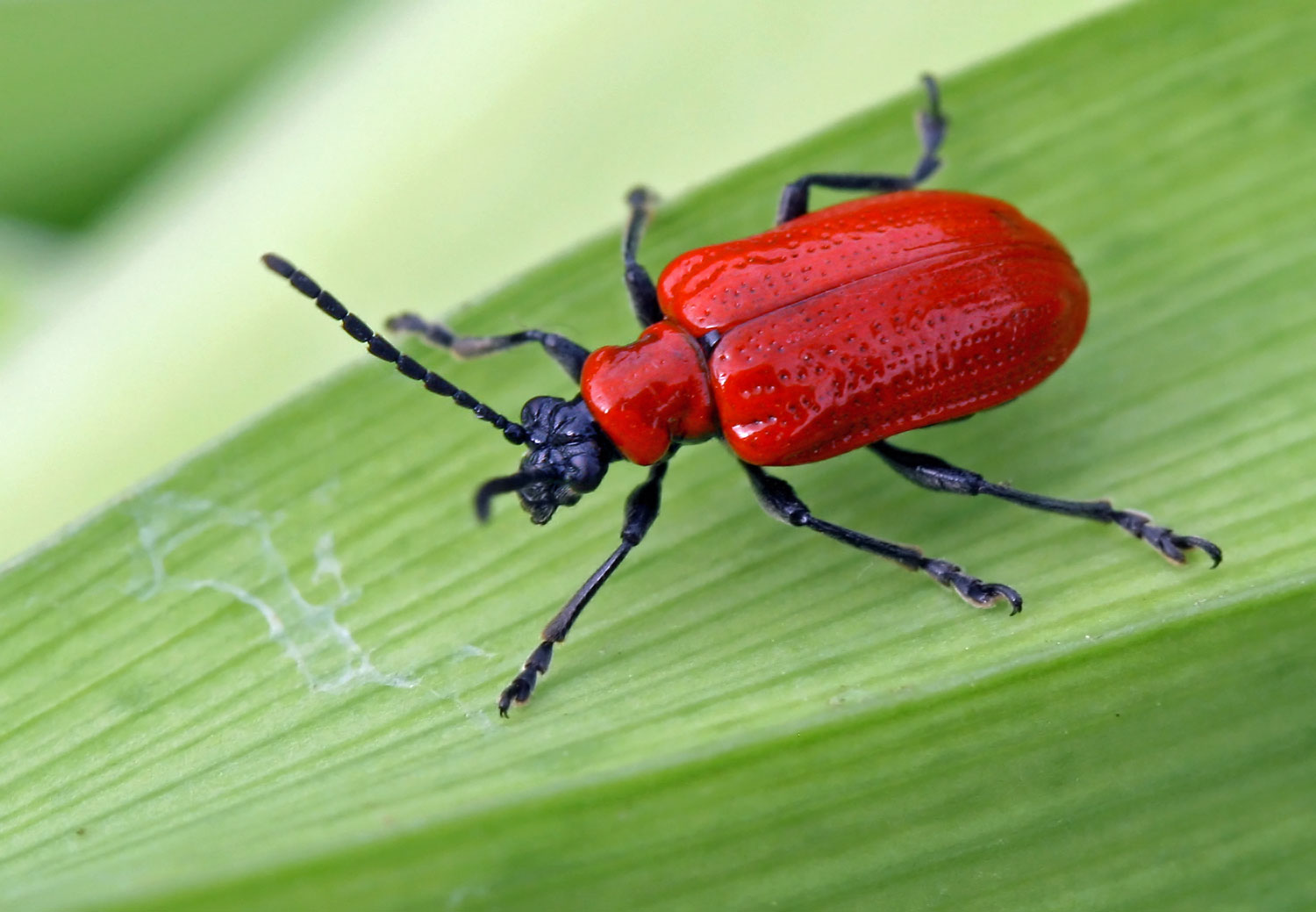Lily Leaf Beetle Control
Posted by Sunset Garden Experts on
LILY LEAF BEETLE

Damage
If uncontrolled, the beetle will completely defoliate and ultimately kill all true lilies (Lilium species, such as Asiatic, Oriental, Easter, Tiger and Turk’s Cap lilies). It will also feed on fritillaria species.
Description
The adult beetle is bright scarlet red, with black legs, head, antennae and undersurface. It is 1/4" to 3/8” long and is a strong flyer. The adult lays reddish-orange eggs which hatch into particularly unpleasant larvae, which look like 3/8” long slugs; coloured orange, brown, yellow or green with black heads. The larvae cover themselves with their own excrement (known as a fecal shield) to repel predators. The larvae eventually become fluorescent orange pupae.
Life Cycle
The adult beetle overwinters in the soil or plant debris and emerges in early spring looking for food and a mate. After mating, the female lays eggs in lines on the underside or Lilium or Fritillaria leaves. Some damage is done by the adults at this time, but the major damage comes when the eggs hatch into larvae in 7-10 days. The larvae voraciously consume all leaves within reach and may then start on flower buds. This continues for 2 to 3 weeks, when the larvae then drop into soil and begin to pupate. In another 2 to 3 weeks the adult beetles emerge to start eating again. This process occurs from early spring to mid-summer. By this time the beetles shouldn't mate or lay eggs until the next spring.
Active Control
First of all, if you’re in an infested area, avoid sending any lilies or other plants to anyone else, and carefully inspect any plants you receive.
Hand-pick the beetles: Drown them in soapy water (the water has to be soapy so the beetles don’t just swim and crawl out). If you get all the red lily beetles in the early spring when they first emerge from the ground, you’ll not see too many more problems the rest of the summer. If you miss picking them, your lilies will be eaten to the ground.
Use Diatomaceous Earth. This powder is reputed to work on the red lily beetle by giving it lots of tiny cuts and the insect dies from dehydration.
An ammonia and water mix (1 part ammonia to 10 parts water) Watered in near your lily bulbs before they sprout through the ground in spring may be enough to kill any overwintering beetles.
Insecticide sprays with Pyrethrins such as End-all: Will kill adult beetles
Share this post
- Tags: Lily Leaf Beetle Control
